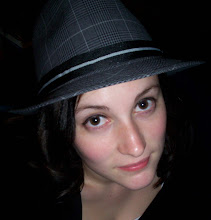So why, oh lord why, did he choose to remake Niels Arden Oplev’s Swedish film that was perfectly capable of telling the story already? Why did he waste months and years of his precious filmmaker time to give everyone a third outing of the Millennium Trilogy? 30 million people worldwide have read the books; the first film made over a hundred million smackers. This is not some obscure gem that needed a fresh facelift: it’s all tremendously modern and already available in literary and film formats. So the question is: what did Fincher hope to achieve with his version of The Girl with the Dragon Tattoo, and did he succeed? He claims that it is a completely different film from the Swedish version, but it’s not, of course. When they both work off the same source material, a dense brick of a novel with elaborate backgrounds for each character and incident, they are going to hit the same beats. Yes, it is different, because someone different directed it and the actors are different. Yes, it’s different because everyone speaks in English with Swedish accents (though they read Swedish-language newspapers.) But honestly, apart from a small change in the ending, it is the same film told the same way, and you’ll feel exactly the same by the end as you would at the end of the Swedish version. (That is: paranoid about government agencies, horrified by all men and never able to have sex again.)
It’s hard to see past that to judge the film on its own merits. Of course, it’s wonderfully cast: Rooney Mara captured the damaged (and thin) look wonderfully to be computer hacker/ward of the state Lisbeth Salander; Daniel Craig is the perfect age to be disgraced but excellent investigative journalist Mikael Blomkvist; and Christopher Plummer is expansively patriarchal as Henrik Vanger, the wealthy industrialist who inadvertently brings the two together to solve a forty-year-old crime: the loss of his beloved niece. It’s not all Agatha Christie innocence, however: you will be disturbed, by the outcome and also by many scenes disturbing in both sexual and non-sexual gore (Lisbeth’s relationship with her new guardian Bjurman—Yorick van Wageningen—is especially something you’ll want to cover your eyes for.) The growing friendship between youthful Salander and craggy Blomkvist is convincing and enjoyable to witness; the peripheral characters are portrayed just about as you’d imagine them. On a visual level, Fincher perhaps overtakes Oplev purely because where Oplev sees the place he lives and conveys it in a natural way, Fincher sees it from our non-Swedish perspective, revealing the white, icy beauty and Ikea-white angles of homes and buildings. His intro, also, is quite mind-blowing, as a soft, tender tinkly piano barrels into a tar and sweat-soaked Karen O intro as Mara and Craig sex things up in an edgy, oiled-up way along with an eagle, a snake, and some raunchy flowers. Atticus Ross and Trent Reznor score the whole flick with requisite rage and gentleness.
Lisbeth’s use of Google and Wikipedia to track someone down seems to undermine her enormous talent in the hacking field; the Swedish accents sometimes slip; I felt that despite the epic running time—nearly three hours—Lisbeth’s storyline was not given enough time; during a Eureka moment for Blomkvist he makes such a ridiculous show of taking off his glasses in mute shock it seemed like a cliché in what is otherwise a very cliché-free movie; and in frustratingly Hollywood way of thinking, female Rooney is given countless crotch shots and appears fully naked frequently while male Blomkvist (who is polyamorous and hardly a prude) reveals his chest and the barest hint of butt-crack.
Still, these facts don’t at all ruin the film. Fincher’s use of actors in their natural, often makeup-free state is commendable (and something I enjoyed about the first movie trilogy); the long running time doesn’t mean the movie drags—it’s enthralling from start to finish; Mara’s Salander, like Noomi Rapace in the Swedish version, is an absolute treat of a character, scarred from a lifetime of people screwing her over but with a raspy charm all her own: wearing a t-shirt saying “Fuck you you fucking fuck”, explaining Blomkvist’s background to the man who has hired her: “Sometimes he performs cunnilingus. Not often enough in my opinion”—she really is amazing and is the new style of heroine everyone says she is. It passes the Bechdel Test (barely) and, in Sweden, is called Men who Hate Women, so the women are smart and not underwritten.
By all means, go see it if you’re unable to see the Swedish version—it’s a well-crafted film telling a wholly interesting and grotesque family crime story. But without it showing me anything new about the story (which admittedly, I have possibly overdosed on), it is still a vaguely pointless exercise. Because of this, and my clear ragey bias about it, I’m not going to give this movie a rating. See it for yourselves and let me know what you think.
The Girl with the Dragon Tattoo is out January 12.


Interesting read. I don't think I can justify the time. I quite liked the Swedish version and after reading the book (and being a tad bored by it) I'm done with it.
ReplyDeleteMight I suggest that you review 'The Skin I Live In'?